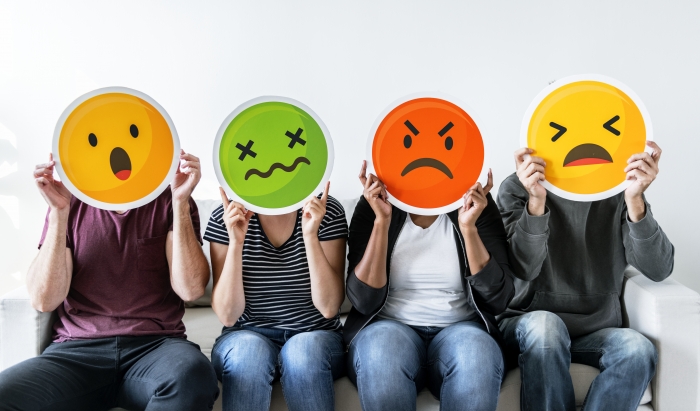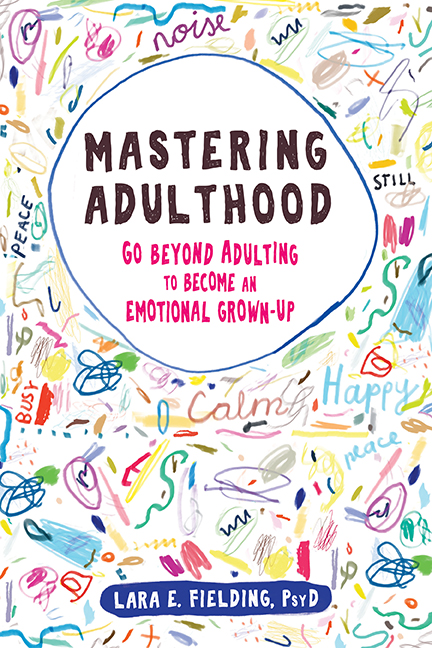An excerpt from Mastering Adulthood: Go Beyond Adulting to Become an Emotional Grown-Up
Working with Your Here-and-Now Experience
To really know in your bones how to respond when your emotions get triggered in real life, you’ll have to practice with real here-and-now emotions. Knowing something intellectually is much different than knowing it from inside your skin. So, a great way to learn how to be skillful before the next emotional trigger is to actively choose to invite in the emotions with which you need to practice. In experimental research that explores how emotions can affect or be affected by the other dashboard components, psychologists use techniques called emotion induction. Emotion induction simply means actively bringing up an emotional experience rather than just waiting to catch it as it pops up in real life. You can use these methods to get the most out of the skills in this chapter. The following is a list of simple ways you can bring emotions to the surface so that you can practice on your own terms with your actual experience.
-
Listening to music and watching movies that evoke the emotion(s) with which you struggle
-
Visualizing and journaling about distressing events
-
Role-playing a common difficult scenario with a trusted friend
-
Taking action toward your true-north values
As you go through the skills, begin with low-intensity emotions at first. For example, use music or bring to mind something that is only mildly upsetting to get the hang of how the practice works. Once you’ve gotten familiar with how a practice goes, increase the intensity each time. If you’ve been diagnosed with a mood or anxiety disorder (particularly due to traumatic life events), ask your therapist to help you move through the deeper exposures. Just as you wouldn’t start bench-pressing super heavy weights without practice or a coach, slowly adjust the intensity to build your resilience over time. This building-up process will increase your emotional flexibility, which will help you navigate the triggers and stay committed on your journey to mastering adulthood.
Beginning in the Body
Do you ignore your body? Innumerable tiny signals are constantly sending messages and early warning signs about the effects of stress on our vehicle. For most of us, they’re way outside our awareness. Instead, we tend to live in the heady problem-solving space of ruminating, worrying, and judging, which only gives more fuel to our emotions. For most of us, the related bodily sensations go way off the radar, until our emotions are screaming for our attention!
But our bodies are where emotions live—they are embodied. In the space between an emotion and the impulse to take action are physical changes in the body, which can alert us to get ahead of the emotion. The chest tightening, heaviness, and shortness of breath send bidirectional signals to the brain. Because of the back-and-forth influence between the body and our emotions, it’s important to get good at mindfully tuning in to our physical sensations. When we get more in touch with our bodily sensations as a proxy for our emotions, we gain an excellent entry point for being skillful.
Connecting to Emotions in the Body
When you’re getting stressed out and emotions are brewing, the first step is to start zeroing in with mindful awareness on the signs from your body. In the table below, you’ll find some common bodily sensations and their related emotions. If you were having trouble labeling your bodily sensations on your dashboards, this table may be helpful. You may not feel all the sensations, but the idea is to start gently shifting attention into your body and scanning for early reactions. As I always say, “Minds time travel; bodies do not!” So, moving your attention in this way will help anchor you in the present moment, which will help you be more skillful in caring for your emotions. Listening to the signals of your body is the first essential step to anchor you during periods of stress.
Lara E. Fielding, PsyD, is a psychologist who specializes in using mindfulness-based therapies to manage stress and strong emotions. She is adjunct professor in the graduate school of education and psychology at Pepperdine University, CA.



 2024 Peace Playbook: 3 Tactics to Avoid Clashes with Your Partner
2024 Peace Playbook: 3 Tactics to Avoid Clashes with Your Partner